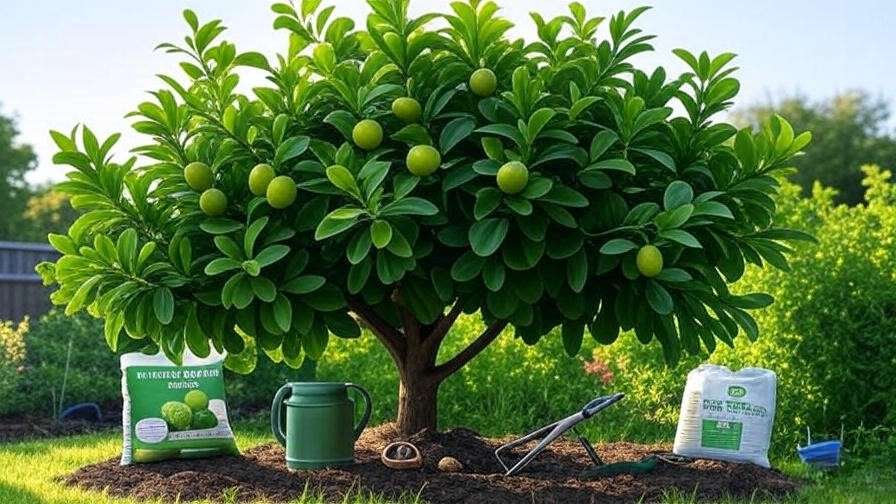Imagine plucking juicy, vibrant limes from your own backyard tree, bursting with flavor for your favorite recipes! 🍋 Whether you’re nurturing a potted lime tree on your patio or tending an orchard, the secret to a thriving, fruit-heavy tree lies in one critical factor: the right lime tree fertilizer. Without proper nutrition, your lime tree may struggle with yellowing leaves, stunted growth, or lackluster fruit production. 😔 This comprehensive guide, crafted by a horticulture expert with over a decade of citrus care experience, will empower you to choose and apply the best lime tree fertilizer in 2025. Backed by the latest research from trusted sources like the University of Florida IFAS, we’ll cover everything you need to grow a healthy, productive lime tree. Let’s dive in and transform your citrus game! 🌳
Understanding Lime Tree Nutritional Needs 🍊🌳
Lime trees, like all citrus, are nutrient-hungry plants that require a balanced diet to flourish. Understanding their nutritional needs is the first step to selecting the best fertilizer and ensuring bountiful harvests.
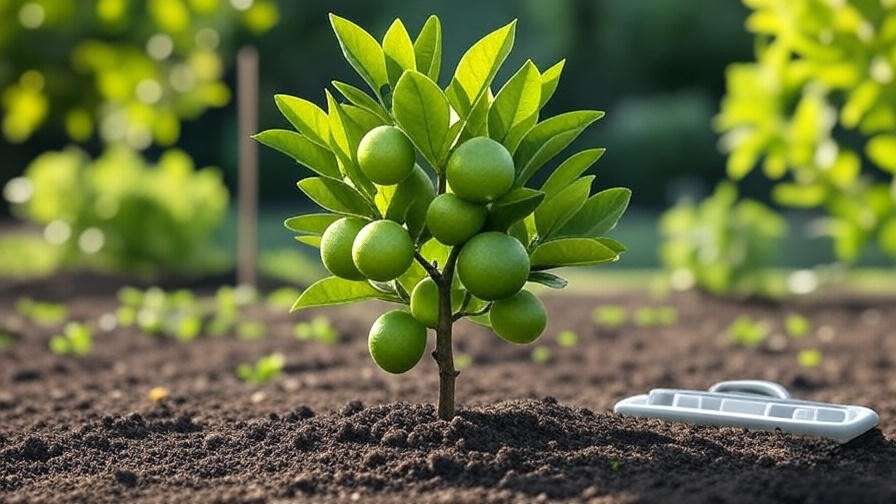
Key Nutrients for Lime Trees
Lime trees thrive on a combination of macronutrients and micronutrients. Here’s what they need:
- Nitrogen (N): Fuels lush, green foliage growth, essential for photosynthesis. 🌿 A nitrogen deficiency often leads to pale, sparse leaves.
- Phosphorus (P): Strengthens roots and promotes flowering and fruit development. 🌸 Insufficient phosphorus can result in fewer limes.
- Potassium (K): Enhances fruit quality, improves disease resistance, and supports overall tree vigor. 🍋 Low potassium may cause small, tasteless fruit.
- Micronutrients: Magnesium, zinc, and iron are critical for preventing deficiencies. For example, magnesium supports chlorophyll production, while zinc aids in enzyme function. A lack of these can cause yellowing leaves (chlorosis) or poor growth.
Signs Your Lime Tree Needs Fertilizer
Not sure if your lime tree is hungry? Look for these telltale signs:
- Yellowing or curling leaves: Often indicates nitrogen or magnesium deficiency. 🍂
- Stunted growth: Slow branch development or small leaves suggest a lack of nutrients.
- Poor fruit production: Small, sparse, or tasteless limes point to potassium or phosphorus shortages.
- Expert Tip: Take photos of your tree’s symptoms and compare them to deficiency charts from reputable sources like university extension programs. 📸
Soil and Environmental Factors
The effectiveness of your lime tree fertilizer depends on soil and environmental conditions. Lime trees prefer a slightly acidic to neutral soil pH (6.0–7.0) for optimal nutrient uptake. 🌍 Test your soil annually using a home kit or professional service to ensure it’s in the ideal range. Climate also plays a role—trees in hot, humid regions may need more frequent fertilization than those in cooler climates. Young trees (under 3 years) require lighter, more frequent feeding, while mature trees need robust doses during growth phases. 🧪
Types of Lime Tree Fertilizers: Which Is Best? 🧑🌾
With so many fertilizers on the market, choosing the right one can feel overwhelming. Let’s break down the main types and their benefits for lime trees.
Organic Fertilizers 🌱
Organic fertilizers are derived from natural sources and are ideal for eco-conscious gardeners. Popular options include:
- Compost and manure: Rich in organic matter, these improve soil structure and provide slow-release nutrients. Well-aged cow or poultry manure is excellent for lime trees.
- Fish emulsion: Packed with nitrogen and micronutrients, it’s a liquid fertilizer that promotes vigorous growth.
- Seaweed extracts: High in trace elements like zinc and iron, seaweed boosts overall tree health.
Pros: Environmentally friendly, improves long-term soil health, and reduces chemical runoff.
Cons: Slower to act than synthetics and may have a strong odor.
Best for: Gardeners prioritizing sustainability and soil vitality.
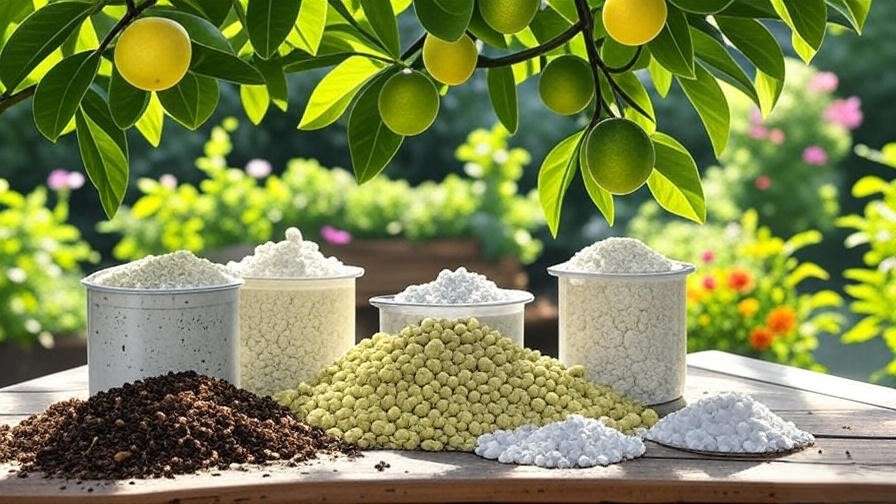
Synthetic Fertilizers ⚗️
Synthetic fertilizers are chemically formulated for quick results. They come in two main forms:
- Granular: Slow-release pellets that you sprinkle around the tree’s drip line (the area under the outer edge of the canopy). Water thoroughly after application. 💧
- Liquid: Fast-acting solutions applied to the soil or as a foliar spray. They’re ideal for addressing immediate deficiencies.
Look for NPK ratios like 8-8-8 or 10-10-10, which provide balanced nutrition for citrus.
Pros: Fast-acting and precise nutrient delivery.
Cons: Risk of over-fertilization and potential environmental impact if misused.
Best for: Gardeners needing quick results or correcting severe deficiencies.
Specialty Citrus Fertilizers 🍋
Specialty fertilizers are designed specifically for citrus trees, including limes. These products often include micronutrients tailored to citrus needs, such as zinc, manganese, and iron. Popular brands include Espoma Citrus-tone and Jobe’s Organics Fruit & Citrus.
Pros: Formulated for optimal citrus health, easy to use, and widely available.
Cons: Can be pricier than general-purpose fertilizers.
Best for: Both novice and experienced gardeners seeking convenience and precision.
Expert Insight: “For lime trees, I recommend specialty citrus fertilizers with added micronutrients,” says Dr. Laura Bennett, a citrus horticulturist with 15 years of experience. “They take the guesswork out of balancing nutrients.” 🧑🌾
When and How to Fertilize Your Lime Tree 📅
Timing and technique are critical to maximizing the benefits of your lime tree fertilizer. Here’s how to get it right.
Best Times to Fertilize
Lime trees have distinct growth phases that dictate fertilization schedules:
- Spring (March–April): Apply fertilizer as new growth begins to support leaf and branch development. 🌸
- Summer (June–July): Feed during fruit development to boost lime size and quality. ☀️
- Fall (September–October): A light application prepares the tree for dormancy and strengthens roots. 🍂
- Winter: Avoid fertilizing, as lime trees are typically dormant and won’t absorb nutrients effectively.
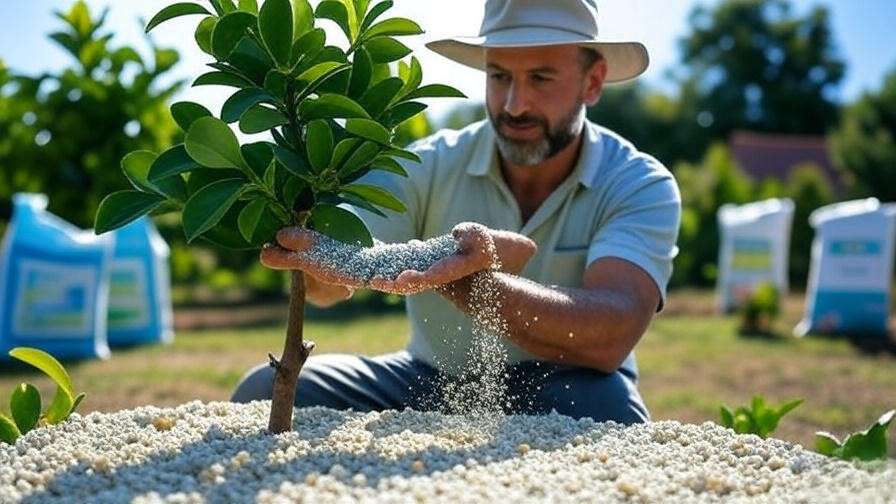
Frequency: Mature trees (over 3 years) benefit from 3–4 applications per year, while young trees may need lighter doses every 6–8 weeks during the growing season.
Application Methods
- Granular Fertilizers: Spread evenly around the drip line, avoiding the trunk to prevent burn. Water deeply to help nutrients penetrate the soil. 💦
- Liquid Fertilizers: Dilute according to package instructions and apply to the soil or as a foliar spray (early morning is best for foliar applications). This method is great for quick nutrient boosts.
- Step-by-Step Application:
- Measure the recommended fertilizer amount based on tree size.
- Spread or pour evenly around the drip line.
- Water thoroughly to activate the fertilizer.
- Monitor the tree for signs of improvement over the next 2–4 weeks.
Dosage Guidelines
Dosage depends on tree age and size:
- Young trees (1–3 years): Use 0.5–1 lb of fertilizer per application, spread over 4–6 feedings per year.
- Mature trees: Apply 1–2 lbs per year of tree age, split across 3–4 applications (e.g., a 5-year-old tree needs 5–10 lbs total annually).
- Warning: Over-fertilization can burn roots or cause excessive vegetative growth at the expense of fruit. Always follow package instructions and err on the side of caution. ⚠️
Choosing the Best Lime Tree Fertilizer in 2025 🏆
Selecting the right lime tree fertilizer can make or break your tree’s health and productivity. Below, we’ve curated a list of top-performing fertilizers for 2025, along with comparisons and scenario-based recommendations to suit every gardener’s needs.
Top Fertilizer Recommendations
Here are three standout fertilizers, chosen for their effectiveness, availability, and alignment with lime tree needs:
- Espoma Citrus-tone (Organic, 5-2-6)
Key Features: Organic, slow-release formula with added micronutrients like magnesium and iron. Promotes lush foliage and juicy fruit.
Price Range: $15–$25 for a 4-lb bag.
Where to Buy: Available at garden centers, Amazon, or Espoma’s website.
Best for: Eco-conscious gardeners seeking sustainable, long-term soil health. 🌱 - Miracle-Gro Citrus, Avocado, & Mango (Synthetic, 6-4-6)
Key Features: Fast-acting granular fertilizer with a balanced NPK ratio and micronutrients. Ideal for quick nutrient boosts.
Price Range: $10–$20 for a 4.5-lb bag.
Where to Buy: Widely available at Home Depot, Walmart, or online retailers.
Best for: Gardeners needing rapid results or correcting visible deficiencies. ⚗️ - Jobe’s Organics Fruit & Citrus (Organic, 3-5-5)
Key Features: Organic granular fertilizer with Biozome, a blend of beneficial microorganisms to enhance soil vitality. Supports root and fruit development.
Price Range: $12–$22 for a 4-lb bag.
Where to Buy: Available at Lowe’s, Amazon, or Jobe’s website.
Best for: Gardeners wanting a balance of organic benefits and robust citrus nutrition. 🍋
Comparing Cost vs. Effectiveness
- Budget-Friendly Options: Miracle-Gro offers excellent value for synthetic fertilizers, delivering quick results at a lower price point. However, frequent applications may be needed.
- Premium Products: Espoma and Jobe’s organic options are pricier but invest in long-term soil health, reducing the need for additional amendments.
- Long-Term Benefits: Organic fertilizers like Citrus-tone build soil fertility over time, while synthetics like Miracle-Gro provide immediate but shorter-lived results. For most gardeners, a combination of both (e.g., organic in spring, synthetic in summer) maximizes growth and fruit yield.
Expert Picks for Different Scenarios
- Best for Potted Lime Trees: Jobe’s Organics Fruit & Citrus. Its slow-release formula prevents nutrient buildup in confined soil, and Biozome supports root health in pots. 🪴
- Best for Outdoor Orchards: Espoma Citrus-tone. Its organic composition enriches large soil areas, ideal for multiple trees. 🌳
- Best for Correcting Nutrient Deficiencies: Miracle-Gro Citrus, Avocado, & Mango. Its fast-acting nutrients quickly address yellowing leaves or poor fruiting. ⚡
Expert Insight: “For potted lime trees, I always recommend a slow-release organic fertilizer to avoid shocking the roots in limited soil,” says Dr. Laura Bennett. “Outdoor trees can handle a mix of organic and synthetic for flexibility.” 🧑🌾
Common Fertilization Mistakes to Avoid 🚫
Even seasoned gardeners can make mistakes when fertilizing lime trees. Here are the most common pitfalls and how to steer clear:
- Over-Fertilizing: Applying too much fertilizer can burn roots, cause leaf drop, or lead to excessive leaf growth at the expense of fruit. Always measure carefully and follow package guidelines.
- Ignoring Soil pH: If your soil is too acidic (below 6.0) or too alkaline (above 7.0), nutrients become unavailable, even with the best fertilizer. Test and amend soil with lime (to raise pH) or sulfur (to lower pH) as needed. 🧪
- Fertilizing at the Wrong Time: Applying fertilizer in winter or during extreme heat can stress the tree. Stick to spring, summer, and fall schedules.
- Expert Tip: “After applying fertilizer, water deeply to distribute nutrients evenly,” advises Dr. Bennett. “This simple step prevents root burn and ensures absorption.” 💦
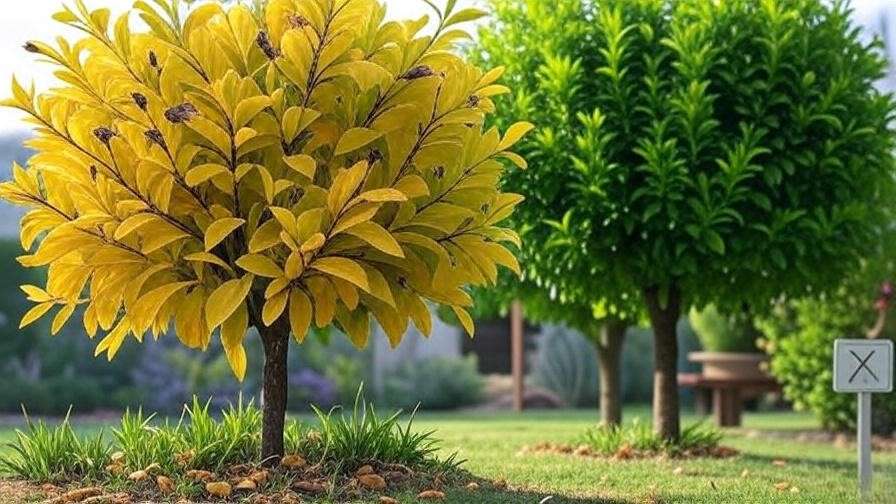
Complementary Care Tips for Thriving Lime Trees 🌞
Fertilization is just one piece of the puzzle. To maximize your lime tree’s health and productivity, incorporate these complementary care practices.
Watering and Irrigation
Lime trees need consistent moisture, especially during fruit development.
- How Much: Water deeply 1–2 times per week, ensuring the top 6–8 inches of soil stay moist but not waterlogged.
- How It Helps Fertilizer: Proper watering ensures nutrients from fertilizers reach the roots effectively. Under-watering can cause nutrient lockup, while over-watering may leach nutrients away.
- Tip: Use a soaker hose or drip irrigation for even moisture distribution. 💧
Pruning and Pest Control
- Pruning: Trim dead or crossing branches in late winter or early spring to improve air circulation and nutrient distribution. This encourages fruit production and reduces disease risk. ✂️
- Pest Control: Common pests like citrus leaf miners and aphids can weaken lime trees, reducing fertilizer effectiveness. Use organic solutions like neem oil or introduce beneficial insects like ladybugs. 🐞
- Tip: Inspect leaves regularly for signs of pests, especially under new growth.
Mulching and Soil Health
- Mulching: Apply a 2–3-inch layer of organic mulch (e.g., wood chips or compost) around the base of the tree, keeping it 6 inches from the trunk. Mulch retains moisture, regulates soil temperature, and slowly adds nutrients. 🌾
- Soil Health: Rotate fertilizer types (e.g., organic one year, synthetic the next) to maintain soil fertility and prevent nutrient depletion.
- Tip: Refresh mulch annually to keep soil vibrant and weed-free.
FAQs About Lime Tree Fertilizer ❓
Here are answers to common questions gardeners ask about fertilizing lime trees, based on expert knowledge and practical experience:
- Q1: How often should I fertilize my lime tree? 🕒
A: Mature trees need 3–4 applications per year (spring, summer, fall), while young trees benefit from lighter doses every 6–8 weeks during the growing season. Adjust based on soil tests and tree health. - Q2: Can I use all-purpose fertilizer for my lime tree? 🌿
A: All-purpose fertilizers (e.g., 10-10-10) can work but may lack micronutrients like zinc or magnesium critical for citrus. Specialty citrus fertilizers are recommended for optimal results. - Q3: What’s the best fertilizer for a potted lime tree? 🪴
A: Jobe’s Organics Fruit & Citrus is ideal for potted trees due to its slow-release formula and soil-enhancing Biozome. Apply sparingly to avoid nutrient buildup. - Q4: How do I know if I’m over-fertilizing? ⚠️
A: Signs include leaf burn (brown, crispy edges), excessive leaf growth with no fruit, or salt buildup on soil. If you notice these, flush the soil with water and pause fertilizing for 4–6 weeks. - Q5: Are organic fertilizers better than synthetic for lime trees? 🌱
A: Organic fertilizers improve long-term soil health and are eco-friendly, while synthetics offer quick results. A hybrid approach (e.g., organic in spring, synthetic in summer) often works best.
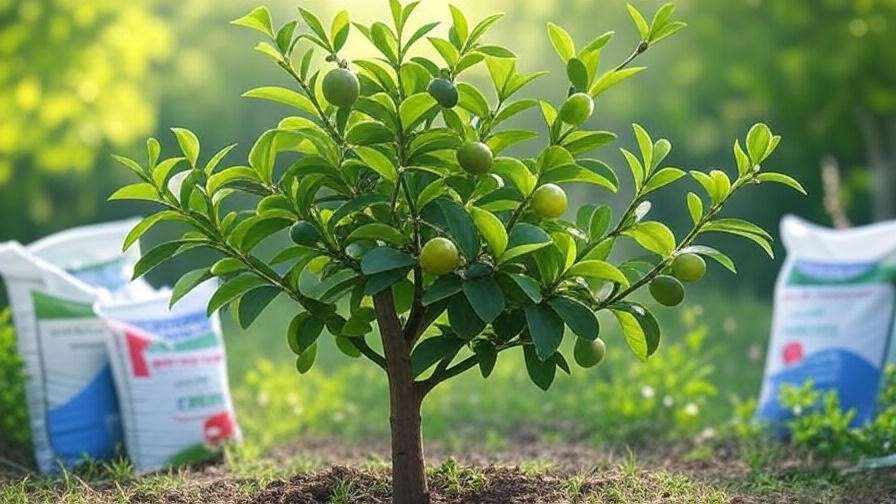
Conclusion: Grow a Thriving Lime Tree with the Right Fertilizer! 🍋🌳
Growing a healthy, productive lime tree is within your reach with the right lime tree fertilizer and care practices. By choosing a fertilizer tailored to your tree’s needs—whether organic, synthetic, or specialty citrus—you can boost growth, enhance fruit quality, and prevent common issues like yellowing leaves or poor yields. Complement fertilization with proper watering, pruning, and soil care for a thriving tree that rewards you with juicy limes year after year. 🌞
Ready to transform your lime tree? Test your soil, pick one of our top fertilizer recommendations, and follow our expert tips to see results in 2025. Share your lime tree success stories in the comments or explore our related articles on citrus pruning and soil health for more insights! 📢

